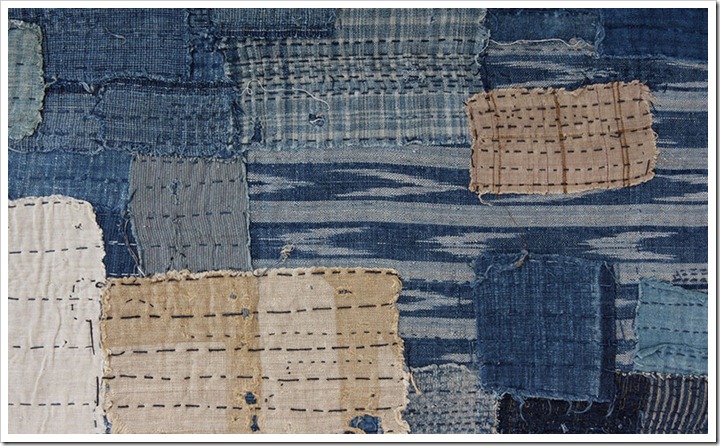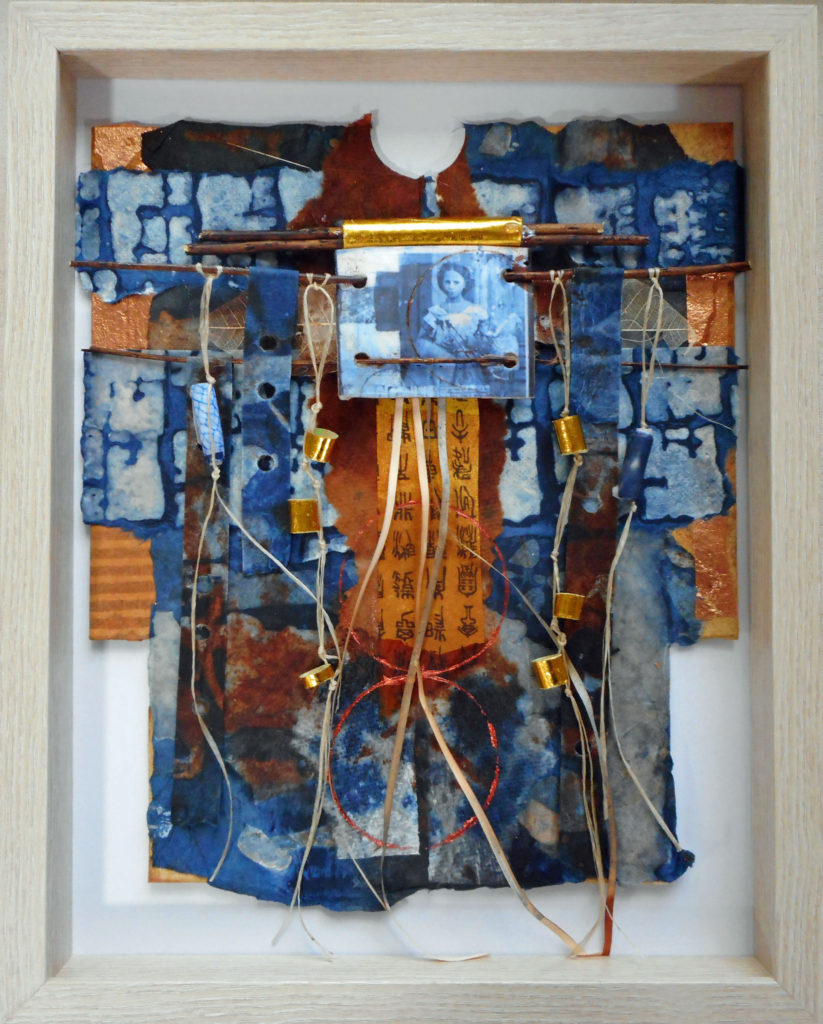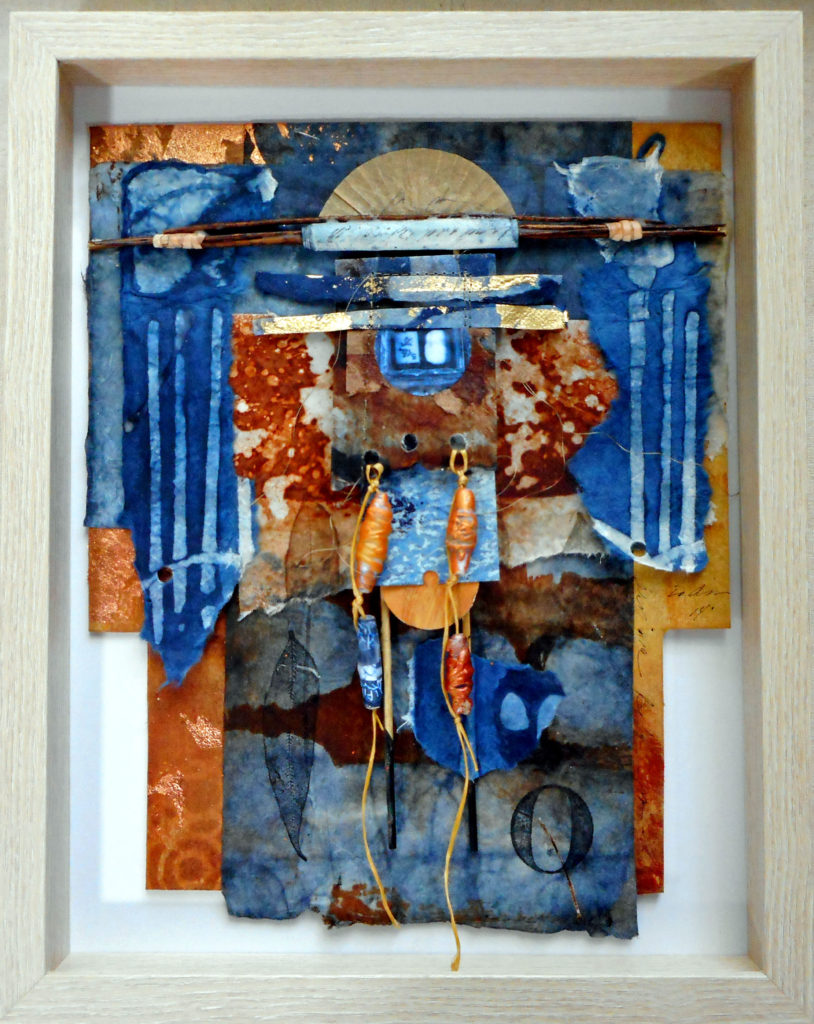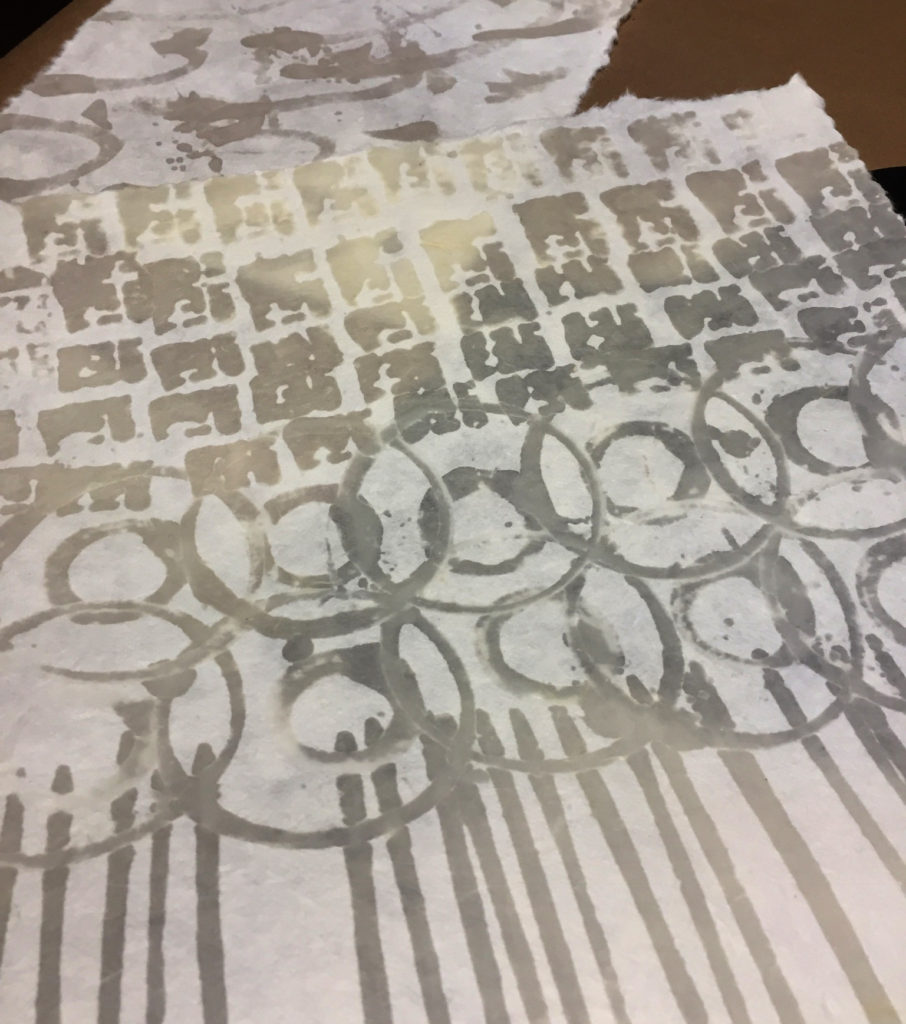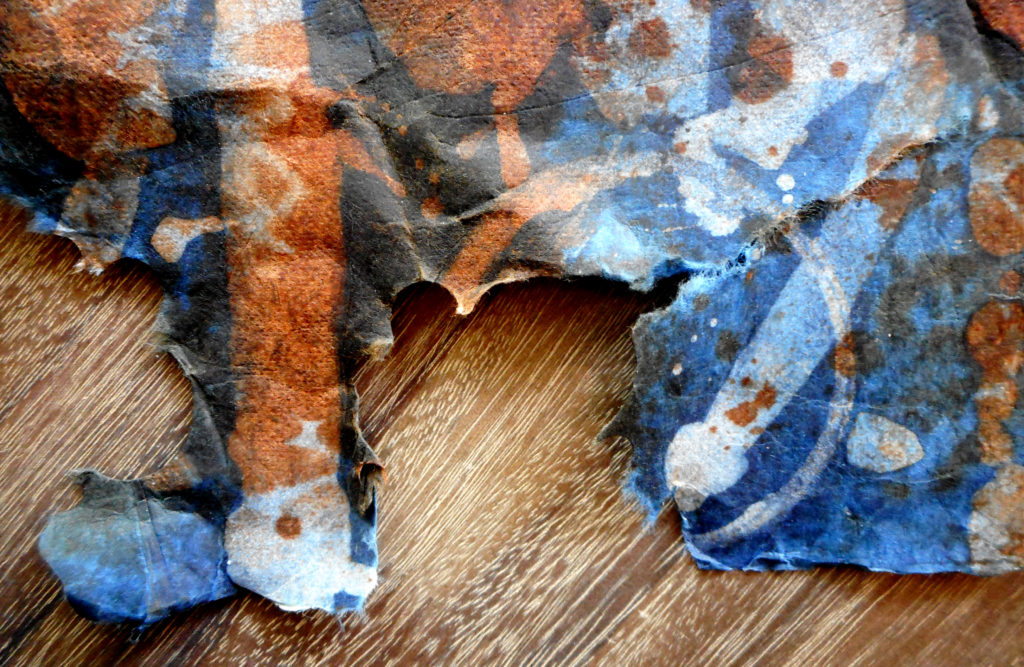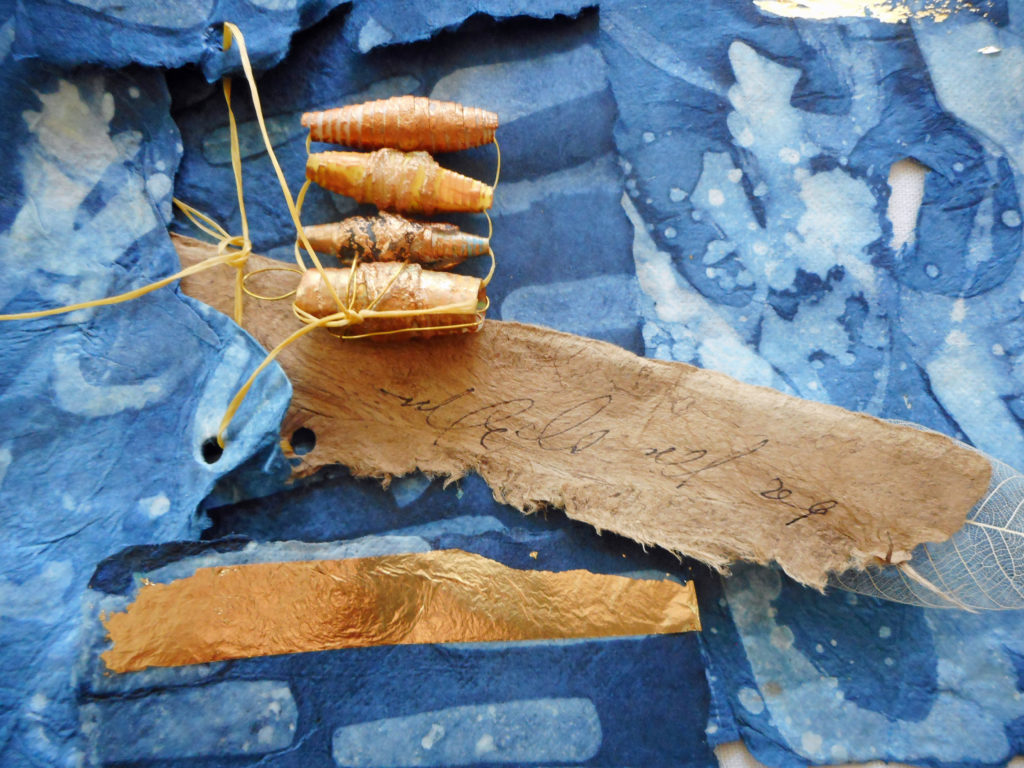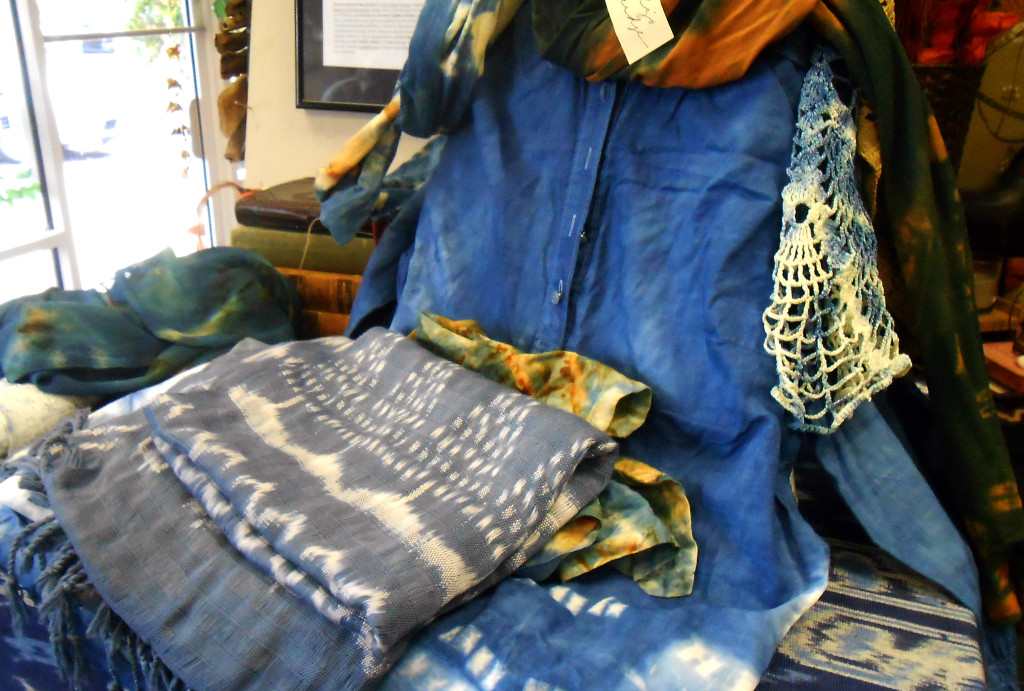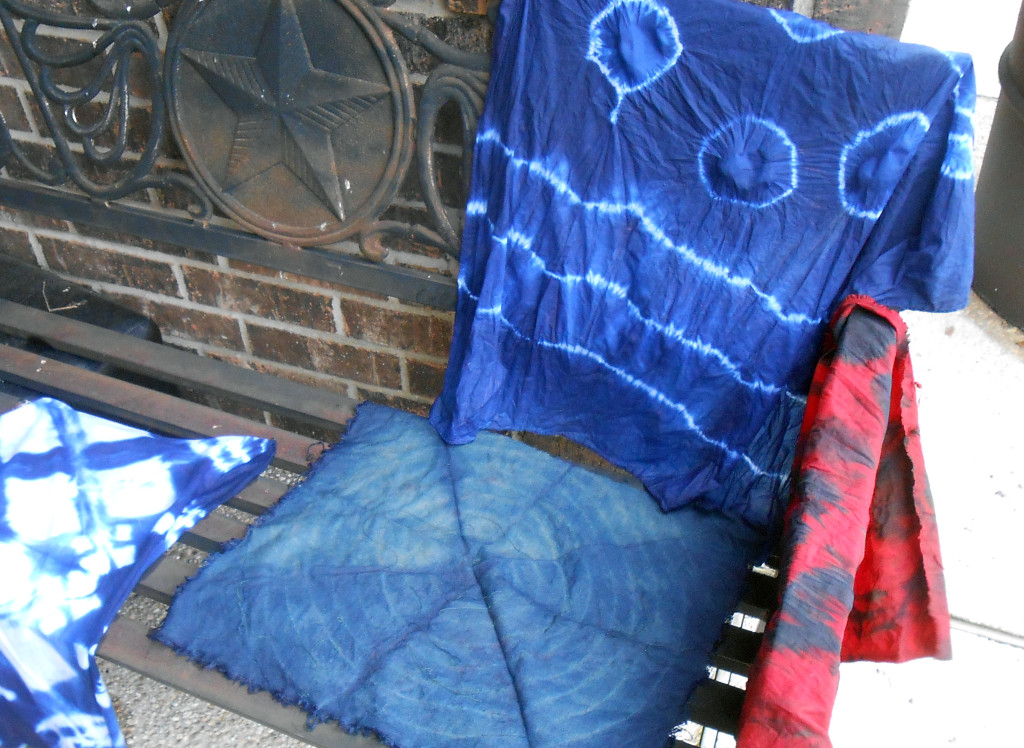But make no mistake: the weeds will win; nature bats last. ~Robert M. Pyle

“Indigo Weeds: Elegant”
6×6″
Lyn Belisle 2018
Weeds are my heroes. They are tenacious, enduring, simple, and elegant. “Indigo Weeds” is my new series of small works celebrating these wild, determined plants that are the ultimate survivors.
Here is the series of four finished pieces:

Process: I made enhanced photographs of weeds, then phototransferred them onto sections of torn canvas dropcloth from my studio.They were designed to be stitched into place on a cloth-covered stretched canvas.
It seemed appropriate to build these little fiber works on canvases covered with fabric that was hand-dyed with indigo (a plant related to beans) and then rusted with common metal objects. I liked the nature-inspired symbolism.
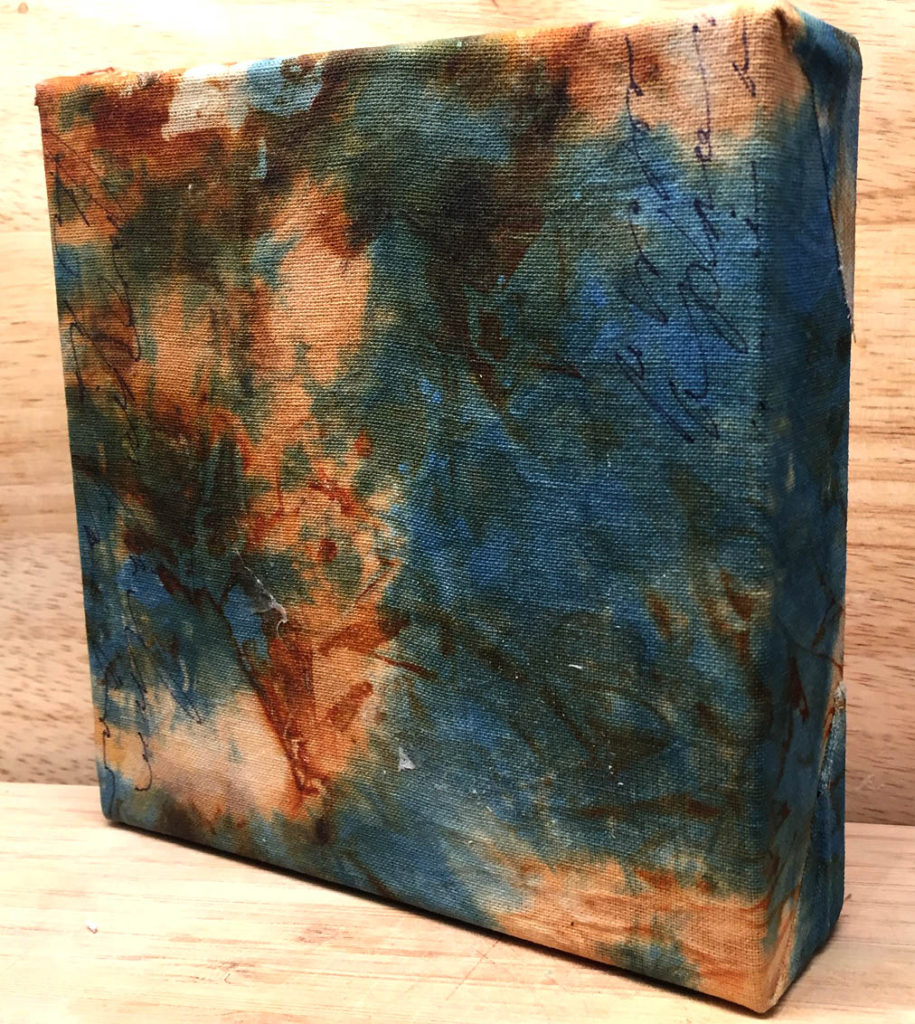 Hand-dyed indigo cloth for the covering was no problem – I had plenty left from teaching previous workshops on dyeing with indigo. Remember this one?
Hand-dyed indigo cloth for the covering was no problem – I had plenty left from teaching previous workshops on dyeing with indigo. Remember this one?

But rusting the cloth afterwards can be tedious. It has to be done after the indigo dyeing so it won’t corrupt the indigo vat. I first tried my usual method – wrapping rusted objects in the vinegar-soaked indigo cloth after sprinkling a layer of salt on everything, then leaving it overnight sealed in a plastic bag. Time-consuming . . . .
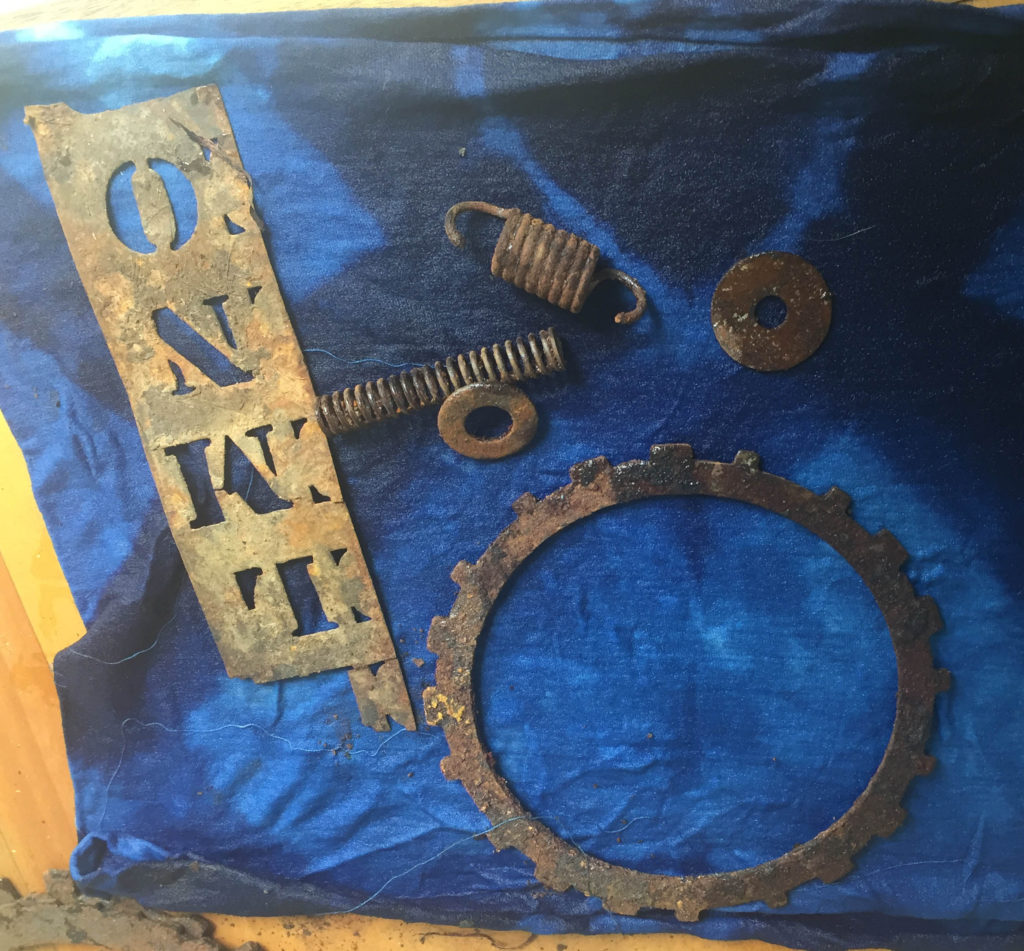
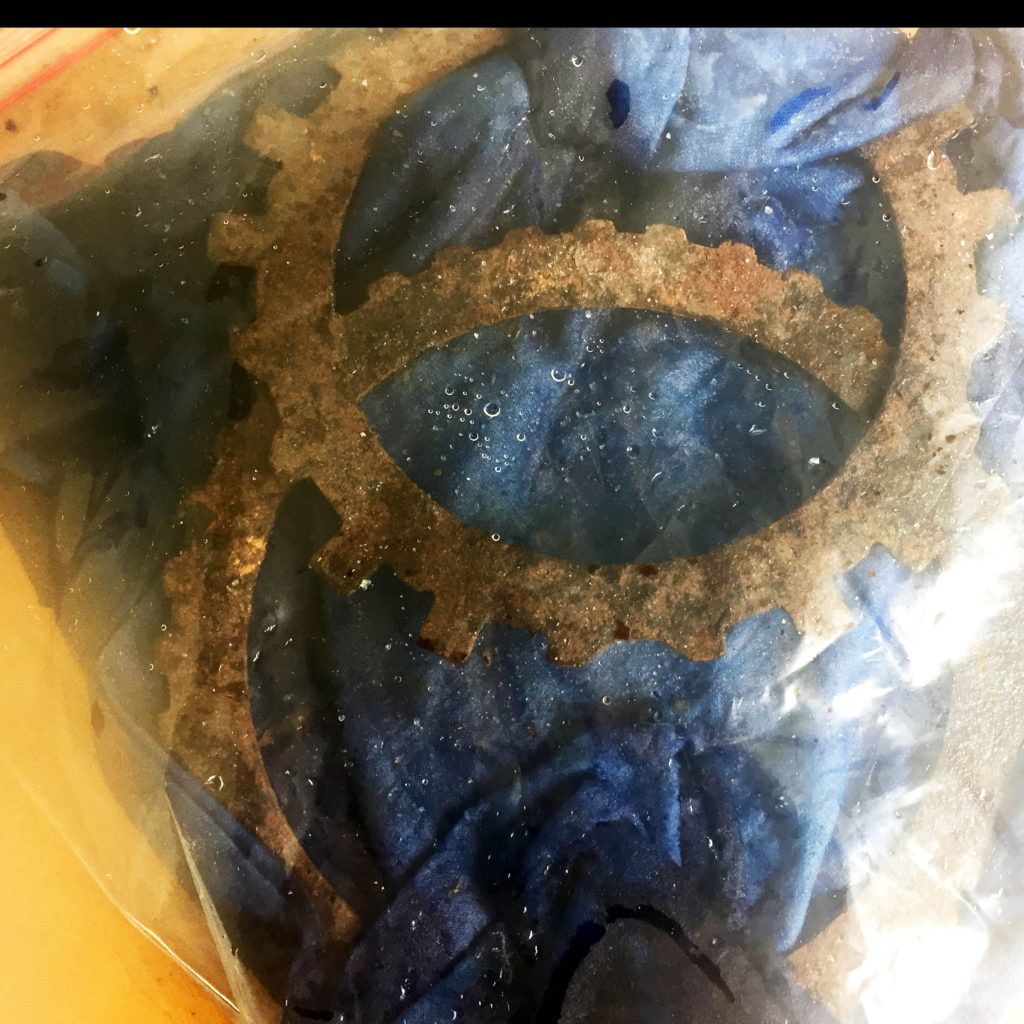
As always, the results are unpredictable, but that’s part of the appeal of the process.
 However, I had a real AHA! moment in the middle of all this – wouldn’t terra cotta walnut ink mimic the rust effect? And it might be an even more appropriate material to use because it is plant-based!
However, I had a real AHA! moment in the middle of all this – wouldn’t terra cotta walnut ink mimic the rust effect? And it might be an even more appropriate material to use because it is plant-based!
Here are photos of the walnut ink being sprayed onto the indigo cloth – I used rust objects and found objects to create patterns.
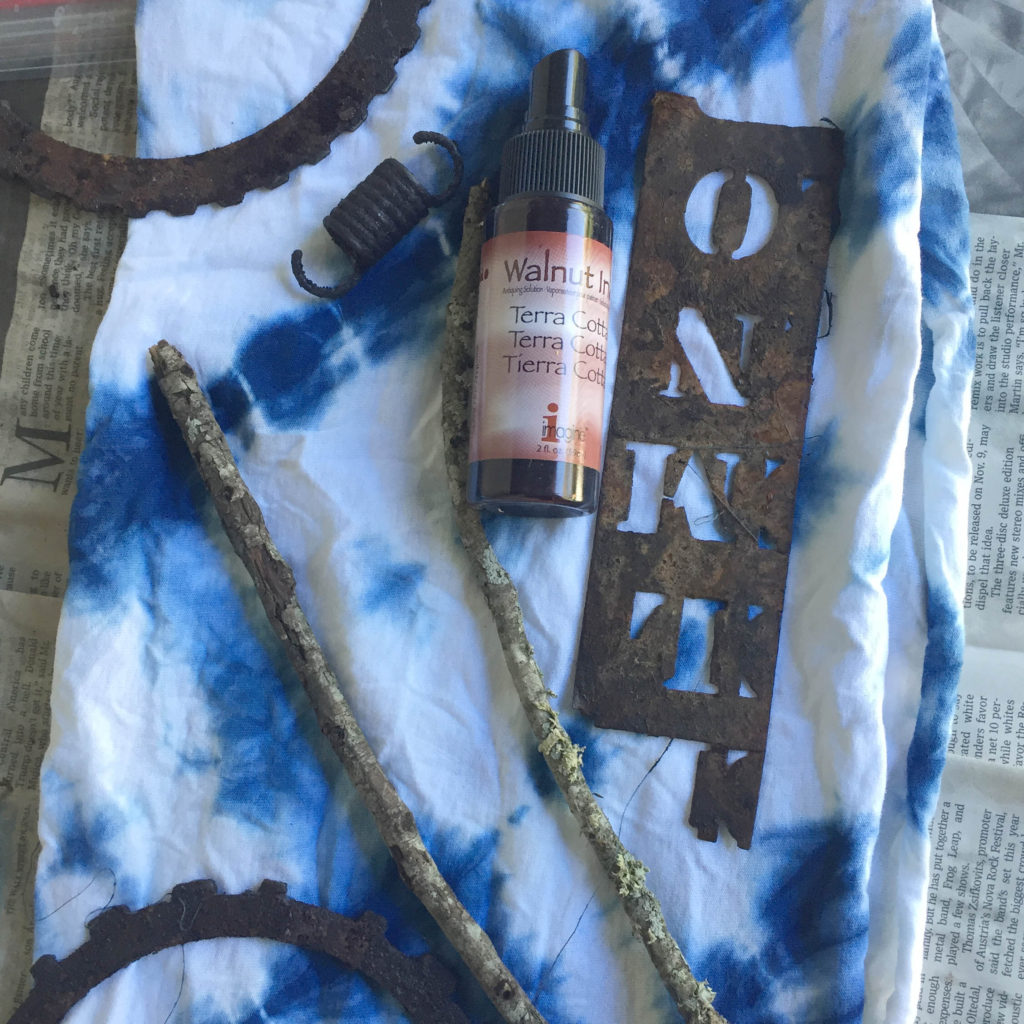
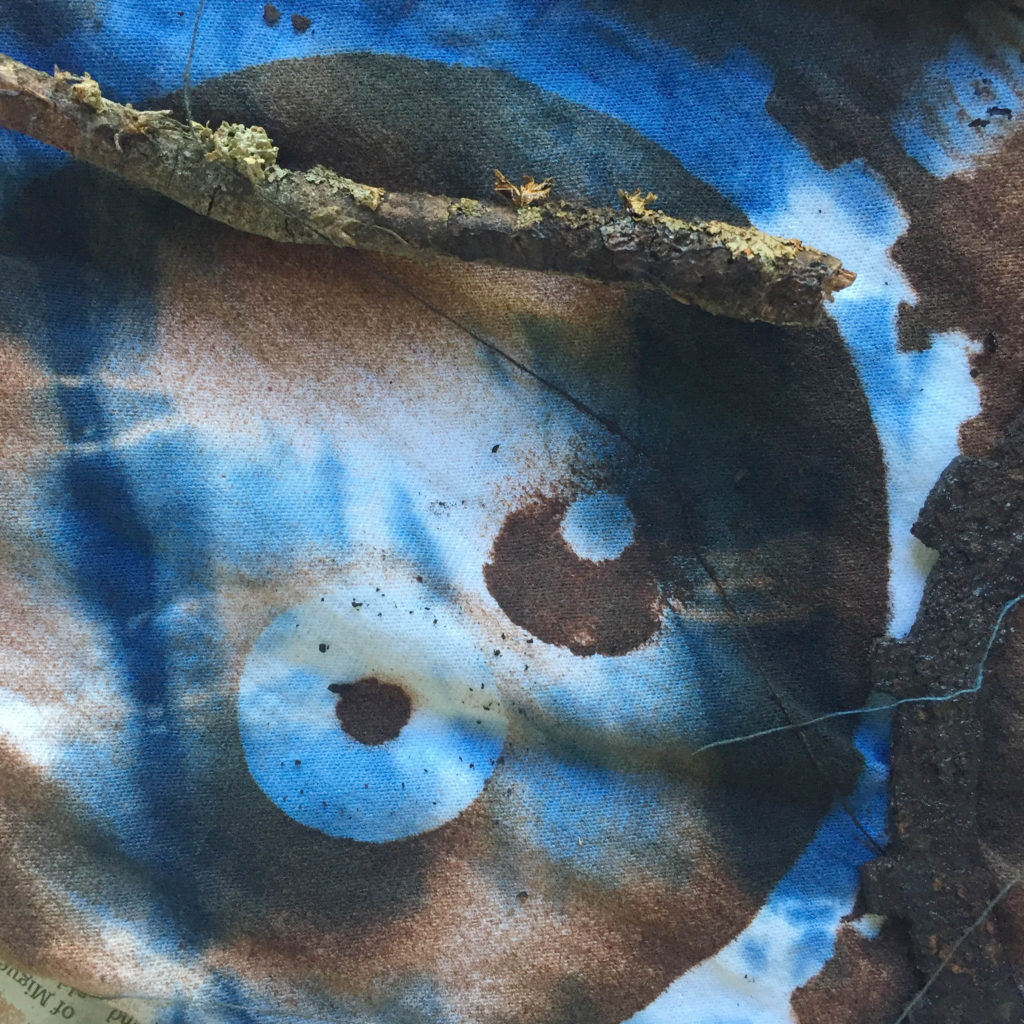
TIP: If you scrunch up the walnut-ink-sprayed fabric while it is still damp, it will soften the pattern edges and give a more natural result.

Side by side, fabric rusted with oxidized iron objects (left) and fabric “rusted” with plant-based walnut ink (right):
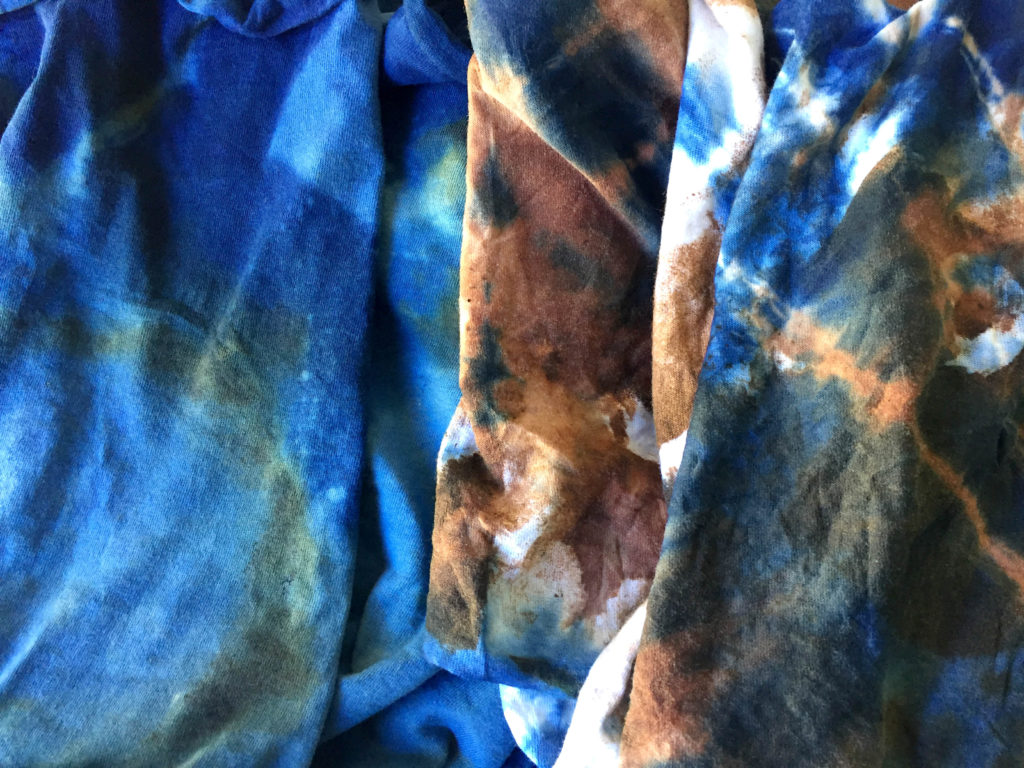
The walnut ink finish is not a washable process for garments and will fade (as will “real” rust) but I love it because it is fast, engaging, slightly more controllable, and – plant-based!
For my purpose – celebrating the tenacious, adaptable, unbeatable weeds of the world – it’s perfect!
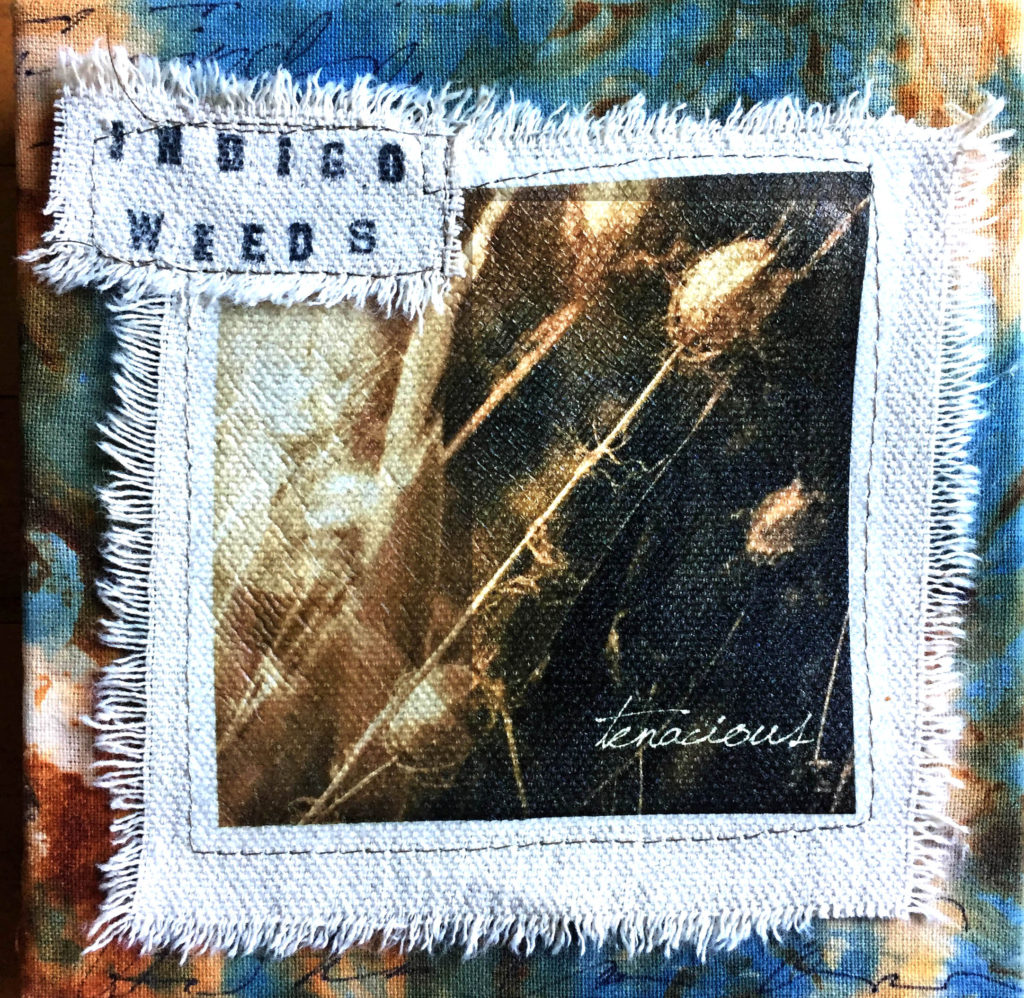
The Indigo Weeds series will be available at the Pop-Up Gallery at SAY Si during the 44th Juried Fiber Arts Exhibit at Say Si Art Gallery, located at 1518 S. Alamo St., San Antonio, TX 78204. Art will hang December 7, 2018 to January 25, 2019.
Oh, and guess who got into the show?? Yep, Boro Horse! You can see him, too, when you come to the FASA exhibit!
Happy trails!

Lyn Belisle
“Boro Horse” 2018


